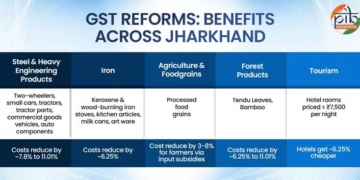Gurugram, 18 June 2020 – Due to global demand recession, all the major economies are reducing interest rates to spur demand among the consumers. While interest rates have been falling in both developed and emerging APAC markets, interest rates are significantly higher in emerging markets. For example, the effective short-term rate in India as of Q2 2020 is about 5.5%, and even with CPI inflation of 3.9% the real short-term interest rate stands at 1.6% -a level which looks set to rise over the next few quarters. An important problem for emerging markets is that considerations of financial stability reduce scope for further interest rate cuts.
As per Colliers Research, the two key factors are driving the prices of APAC investment assets in general. The first is the recession caused by COVID-19. After a very sharp downturn, the recovery starting in China should spread gradually to the rest of the region. The second is record low policy interest rates –the result of a decade of loose monetary policy and recent emergency rate cuts. Real (i.e. inflation-adjusted) interest rates are very low or negative in developed APAC countries, though edging up in certain markets as inflation declines.
Against this backdrop, yields of 2.8%-5.8% for prime/Grade A office assets and of 3.5%-6.1% for logistics/ industrial assets in core APAC investment markets look appealing. In India, at an average cap rate of 8.5% on office assets, there is spread of over 3% compared to 10 year government bond, which makes the investment attractive in commercial core stabilised assets. This gap has only widened in past 3 months with consistent decrease on policy interest rates.
India’s commercial real estate competitiveness continues to remain strong with availability of quality assets at less than one dollar per month per sq. ft. and availability of low cost skilled labour and hence it’s decoupled of local economic issues to some extent. “There are limited core Grade A assets, and hence investor may find it opportune to invest at early stage, either equity or forward purchase and control the quality and specifications. Industrial/ warehousing is also similar trend with strong demand from institutional capital towards this asset class. The demand of cloud infrastructure is leading to various data centres and similar platforms coming in existence and this industry is taking a sizeable shape”, says Piyush Gupta, Managing Director, Capital Markets at Colliers International India.
Residential in India has been suffering over past few years due to policy changes, liquidity stress, aggressive leveraging by developers and financiers. The opportunities for investors are available to acquire or fund against ready inventory and earn much higher returns. The risk return matrix in residential asset class is currently misplaced and any form of liquidity has a significant premium attached. The only meaningful liquidity is coming from SWAMIH Fund of Rs. 25,000 cr. With market consolidating, supply reducing and significant amount of stress, asset prices are currently low and over a long term investors will see an upside from the current levels.
Real estate offers more appealing yields
Compared to low or negative yields on government bonds and the possibility of falling dividend yields for equity markets, the yields offered by real estate assets in APAC markets look attractive. For example, yields in the office sector in developed APAC markets range between 2.8% for prime grade Hong Kong offices at the low end and 5.8% for Auckland at the high end¹. Yields on Grade A office assets in emerging markets are higher, ranging up to about 9.0% for Indian cities. While it may be true that rental income for office assets is under threat, the pressure is generally less than that on corporate profits in equity markets.
















































